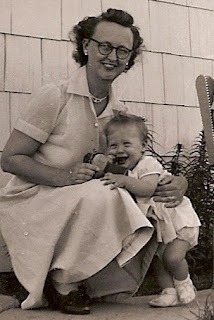 |
| Looking for frog eggs |
Eggs. Red-legged frogs lug them around this time of year, and they don’t look comfortable. After consulting with the hormone department, I got rid of all mine. It was one of my better moves.
We female humans have all the eggs we’ll ever need and about a million more when we’re born. In fact, the high point of our egg-carrying life occurs well before then. At twenty weeks gestation we’re packing five million of the suckers. Fortunately, brain development is continuing apace, probably including the ability to track the egg surplus, and we begin feverishly killing them off until we’re left with only about a third. Don’t tell the Pope.
That still leaves a lot of eggs to lug around. The human female trots out only about four hundred during her reproductive (“bloaty”) years and the rest have to die, because otherwise she’d menstruate for several hundred years, and you think men are warlike. So our human female continues to destroy some 11,000 eggs a month until she hits or otherwise smacks into puberty. Now we’re down to a more reasonable 300,000 eggs, which is a lot of attrition by any standard. There is no evidence that the selection of eggs to discard is anything other than random. If there were quality control, the 2016 election would have turned out a lot different.
 The immature eggs live in little bags of goo called follicles. Thirty or forty of them audition to be a human being every month, but only one matures and gets sent out to the show. Tryouts go on constantly and are not hormone-dependent. But the winning follicle is generally the first to react to Follicle Stimulating Hormone and gets a head start that none of the other follicles can catch up with. The now-mature stimulated egg gets the tiara and all the others die. Which means all of you are here because at some point you sprinted ahead and turned your back on all your fellow follicles. You must be very proud.
The immature eggs live in little bags of goo called follicles. Thirty or forty of them audition to be a human being every month, but only one matures and gets sent out to the show. Tryouts go on constantly and are not hormone-dependent. But the winning follicle is generally the first to react to Follicle Stimulating Hormone and gets a head start that none of the other follicles can catch up with. The now-mature stimulated egg gets the tiara and all the others die. Which means all of you are here because at some point you sprinted ahead and turned your back on all your fellow follicles. You must be very proud.
The egg with the tiara then gets pooted out of the ovary and into the uterus via the Fallopian tubes. Amazingly, a man named Gabriello Fallopio discovered them 450 years ago; he probably was alerted by the name similarity. He was noted for his dissection skills early on, a distinction that can lead to a life as either a respected scientist or a serial murderer. As later developments revealed, he should have studied tuberculosis instead.
Anyway, our mature egg now travels to the uterus, which has recently been staged with overstuffed sofas and a full pantry, and sits back comfy with the tiara waiting for a date, but when he doesn’t show, all the furniture gets shoved out for another month, through a tiny hole, and isn’t that a righteous picnic for everyone involved. Sure as shit is.
 You’re done with it all, however, when the eggs run out, which they will. One thing about those last eggs, though, is they are not spring chicken eggs. They’ve been through the wringer. Older women have a far greater percentage of Abbie Normal eggs and although the most common consequence of that is their eggs don’t properly take to the comfy furniture and turn into humans, another possibility is that they do turn into humans, but not necessarily the kind you were hoping for. There’s a lot more likelihood of chromosomal aberrations in an older woman’s eggs due to longer exposure to free radicals and fevers and stress and whiskey and such.
You’re done with it all, however, when the eggs run out, which they will. One thing about those last eggs, though, is they are not spring chicken eggs. They’ve been through the wringer. Older women have a far greater percentage of Abbie Normal eggs and although the most common consequence of that is their eggs don’t properly take to the comfy furniture and turn into humans, another possibility is that they do turn into humans, but not necessarily the kind you were hoping for. There’s a lot more likelihood of chromosomal aberrations in an older woman’s eggs due to longer exposure to free radicals and fevers and stress and whiskey and such.
Which might have been a thing for my mom to think about when she had me at age forty, if indeed I had been thought about at all, although indications are I was not specifically on anyone’s agenda. But my egg was probably all right. It was tucked inside a Norwegian. You can’t get much safer than that.
Tiara?! So I was once a princess! That would explain a thing or two about my fondness for peas.
Dave thinks I'm a princess because I can feel a gnat's eyelash if it's in my underwear.
"The now-mature stimulated egg gets the tiara and all the others die."
If that was how reality shows really went down, it would be a nice dose of chlorine in the gene pool.
Your mom was older, too? Mine was 42 when she had me. I sometimes wonder if the reason I was out of step with my peers was because my mom was old enough to be my grandmom, so my ideas were a couple generations removed. However, it worked out for me, as I didn't succumb to peer pressure as I was just too weird for any but the equally weird kids. I'm still a weird adult.
I never thought of her as old (she was 40, Dad was 45). She worried that I would, but I just thought everyone else's mom was too skinny and inexperienced-looking.
You sound like my situation. My mom was 40 when I was born and I was quite aware that she looked a lot older than the other moms. Even as a first grader.
Hmm. My next-door-neighbor had a mom even older. I think my first years I just thought that's the way moms were supposed to look.
"If there were quality control, the 2016 election would have turned out a lot different." You're so good when you're bad 😀
I gotta say, your mom looks pretty happy with you, considering your late appearance in her life! That is a sweet shot.
I love that photo. She was very loving. And I was a happy baby.
Worth remembering: we are all unique, just like everyone else. And Murr — you are especially, wonderfully, delightfully unique. So there. Take some adverbs. Deal with it.
Adverbs don't scare me none.
I have sometimes wondered how many versions of each of my children I had hidden away.
Things could've turned out waaaaaay different.
I actually had to put my head down on the desk because I was laughing so hard…"Don't tell the Pope."
I have to say I've thought "if God doesn't care, why should I?" was a good enough reason to…well, never mind.
My mama was older too. 42. And who knew that I had ever claimed the right to wear a tiara? Once, and only once.
Man! We're convening the Old Mommy club here!
Shoot, another hand goes up. My parents were both 42 when I was born. I had three adult siblings who I spent very little time with and barely knew. I never knew I'd won any kind of race before, glad to hear it.
You won the human race, as it were.
It's a good thing I was a biology major in college or all I would be doing now is craving omelettes. I successfully did my best not to contaminate anoyone's eggs with my sperm, but I sometimes wonder what kind of world leader was hidden in my loins.
If you HAVE had a world leader hidden in your loins, I'd say you could have some pretty good kompromat.
Mom had me when she was 39, and there was another one in the pipeline two years later. She had kids in 1947, 48, 52, 56, 63, and 65. She gained 80 pounds with me, and after my little sister, the doc "suggested" a hysterectomy, probably to save her sanity. Since the Catholic Church isn't big on holding off on reproduction, the suggestion gave her an adequate excuse.
Wow! That's a lot of surgery just to avoid taking birth control.
This one had me in stitches until I got to that picture. If ever there was a photo that deserved to hanging above the toilet, this is it. That way, you, Dave, and everydamnbody who comes to your house gets to see it time and time again.
That spot is currently taken by a large old photo of Tour de France competitors smoking cigarettes.
just to be picky, eggs don't make it all the way to the uterus then sit around waiting for the fastest swimming tadpole. The two of them meet up somewhere in a fallopian tube and travel to the uterus together, expanding as they go. This is why there are sometimes "ectopic" pregnancies, when the rapidly expanding egg doesn't make it to the uterus in time and becomes lodged in the fallopian tube, needing to be surgically removed as those tubes have been known to explode under the pressure.
Pick away! I stand happily corrected.
I myself am the product of a 38 year old egg. My mom wasn't much thinking about that either.
It's even possible our mothers were not specifically consulted.